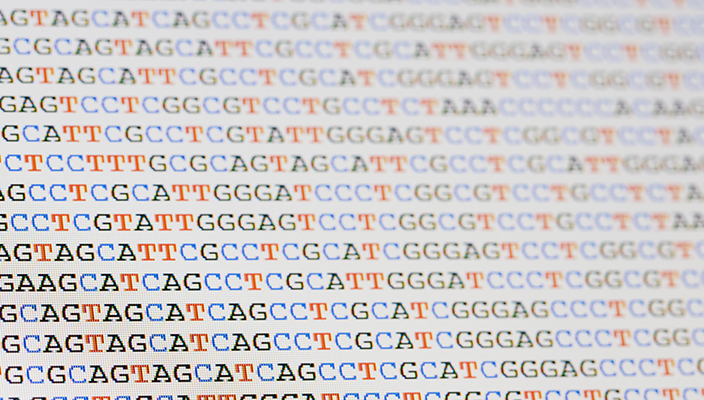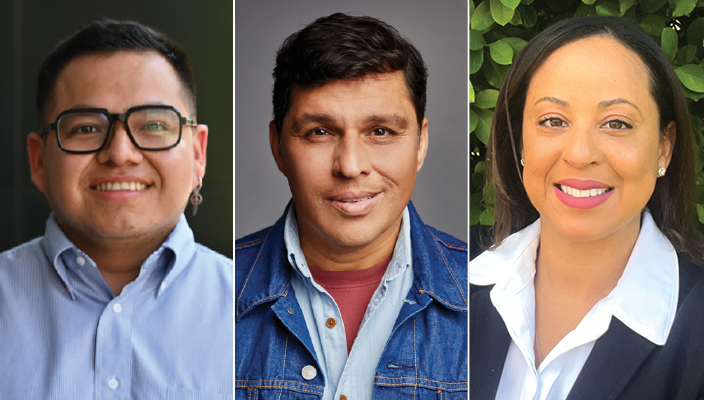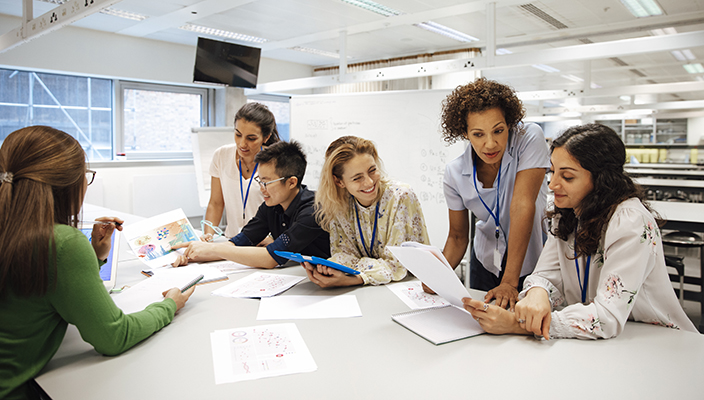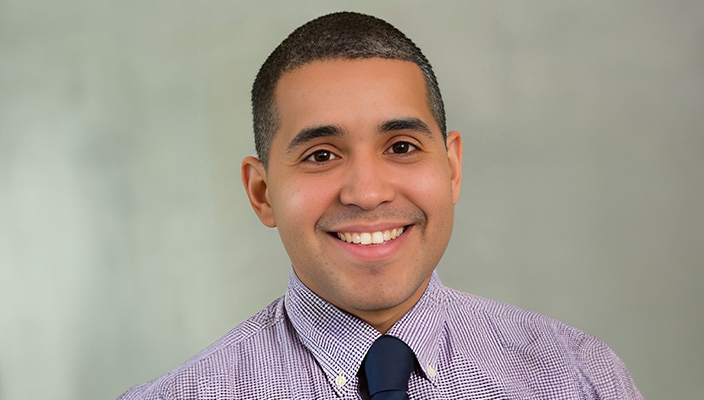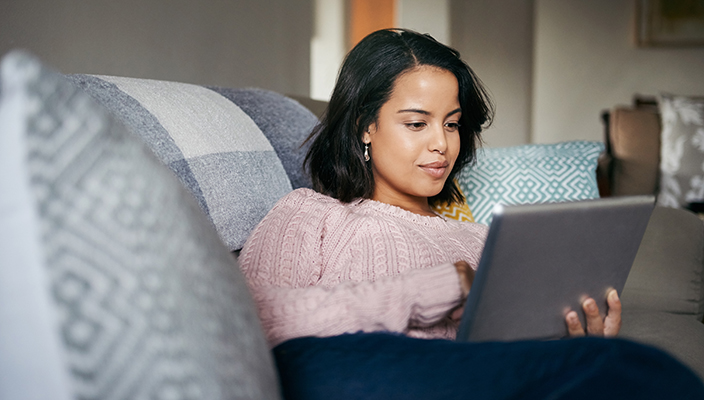From left to right: Alex Bautista, Daniel G. Garza, Aldonza Milian
July is National HIV Awareness Month. Here are some key things to know.
HIV stands for human immunodeficiency virus. It attacks cells in the immune system that usually help fight infection. That makes a person more vulnerable to diseases. HIV is commonly passed on via bodily fluids. Unprotected sex or sharing a needle to inject drugs are the main ways it spreads.
Human bodies can’t get rid of HIV. There’s still no cure for it. If you have it, you have it for life. Untreated HIV can lead to AIDS.
AIDS stands for acquired immunodeficiency syndrome. It’s the final stage of HIV infection.
People with AIDS have very low white blood cell counts. If they don’t take HIV medicine, they may not live more than a few years.
Fortunately, there’s an effective treatment. An HIV medicine called antiretroviral therapy, or ART, can reduce HIV in the blood to a level so low it can’t be detected. People with HIV whose virus particles are suppressed can live long, healthy lives.
But many people don’t know about these new advances. That’s why raising awareness about HIV and AIDS is so important—and why the All of Us Research Program is doing its part. We’re helping to increase knowledge, which in time can improve preventive care and make treatment more inclusive.
And we have some help. Our participant partners, called Participant Ambassadors, support the program. They represent All of Us and sit on committees, boards, and task forces. They provide input on privacy, security, and research priorities.
We recently sat down with three Participant Ambassadors who work in the HIV/AIDS field:
- Aldonza Milian is an associate vice president at Sun River Health, an organization that provides health care in New York City, Long Island, and the Hudson Valley. She oversees HIV case management and programs and medications aimed at reducing the risk of getting HIV. She also does community health education, outreach, and HIV counseling and testing.
- Alexander Bautista is a program manager at AIDS Alabama, where he works to create a safe space for all LGBTQI+ Hispanic/Latino community members. He’s also a coordinator for Hispanic/Latino college students and an advocate for the Hispanic/Latino community throughout the state.
- Daniel G. Garza is a patient advocate who uses social media to produce content about HIV, cancer, and mental health for LGBTQI+ communities. He is a certified life coach, an actor, a stand-up comic, and an author.
How did you first become interested in HIV and AIDS issues?
Aldonza: I was born in the Dominican Republic and moved to New York at age 5. I grew up in the south Bronx. In the early 1990s, the news was broadcasting stories about people dying of AIDS. I learned about the death of Ryan White—one of the first children with AIDS—and the HIV diagnosis of Magic Johnson. I also saw people in my neighborhood dying of AIDS. The high impact in my community made me want to learn more about it.
Alex: I was born and raised in Tabasco, Mexico. My family moved to Alabama in 2009, when I was 14. In 2019, when I was in grad school, I was recruited by Hispanic/Latino outreach coordinator Jean Hernandez at AIDS Alabama. Jean’s passion for making a difference was why I became interested in HIV issues.
Daniel: I was born in Monterrey, Mexico, and moved to Dallas in 1973. In September 2000, I was diagnosed with HIV. In June 2001, when I was living in south Texas, I was interviewed by Univision, during a segment on National HIV Testing Day. I spoke about the importance of Hispanics/Latinos getting tested—and that’s when my life as an advocate started.
How, when, and why did you become a Participant Ambassador with All of Us?
Aldonza: I’ve been a Participant Ambassador for more than 2 years. When an All of Us recruiter came to Sun River Health and told us about the program, I wanted to learn more. So I signed up as a study participant. Then, a few months later, the recruiter talked to me about becoming a Participant Ambassador. And I’ve been doing it ever since.
I believe that because of my lived experience and my experience as an All of Us participant, I have valuable feedback to share. And it’s a great opportunity to provide input on specific aspects of the program.
Alex: A big part of our job at AIDS Alabama is community outreach. I work closely with those who identify as part of the LGBTQI+ Hispanic/Latino community. At one of our events, I met an All of Us recruiter and learned there was a lack of LGBTQI+ Hispanic/Latino representation. That’s why I joined the Participant and Community Advisory Board in Alabama. In 2022, I took a seat on the National Participant Advisory Board.
Daniel: I first learned about All of Us at a conference called “Advancing the Science of Cancer in Latinos” in 2022. I was a guest speaker; I found All of Us during the poster session. I said to the person presenting, “This can’t be ‘all of us,’ because I don’t know about it.” I soon signed up to be a participant and asked, “What can I do?” The response was, “Become an ambassador.” And here I am!
What’s a typical day like for you, and what are your longer-term goals?
Aldonza: In my current role as the associate vice president of grant-funded clinical care, I develop and implement Sun River’s HIV care management program. I work with a team to make sure that support services are in place. I also oversee recruitment, hiring, and personnel management for the Genesis (HIV) Program.
My journey in the field of HIV/AIDS is just beginning. But I know I want to help us get to a place where we have lifesaving treatments and HIV prevention interventions that allow people with HIV to live longer and healthier lives.
Alex: Centro de Acceso para Latinos en Alabama (CALA) is a program at AIDS Alabama. CALA serves two populations: 1) those living with HIV and 2) LGBTQI+ Hispanic/Latino people, through a group called REAL (Revolution. Evolution. of Latinx in Alabama)—the only group in Alabama that serves LGBTQI+ Hispanic/Latino people.
Every day here is different, which I love. We provide linguistic services to our clients and participants. We make sure they have their medications and keep up with their doctor appointments. We also host support groups focused on mental health and issues around HIV and LGBTQI+ Hispanics/Latinos in the South. Community members can receive free testing on site anytime.
As I advance in my career, I want to start publishing scholarly articles and conduct a qualitative study of Hispanics/Latinos in Alabama living with HIV. My goal is to increase visibility in the state and in academia.
Daniel: A Day in the Life of Daniel G is anything but typical. I produce and host a livestream show with my partner, called The Christian & Daniel Show. I record videos for my series, called Daniel’s Day. And I’m always working on my main causes: HIV, anal cancer, and mental health.
I also visit clients to do coaching sessions. And I travel for work too—attending conferences, facilitating trainings, and emceeing events. I try to sneak in a nap when I can!
On my vision board are the words “Travel Around the World.” And my three main passions are advocacy, spirituality, and entertainment. I want to tell my story, coach people, and collaborate with other advocates in other countries. I want to show folks that nothing—not HIV, not anal cancer, not even an ostomy—can stop me from reaching my goals or making my dreams come true.
What are your favorite parts of being a Participant Ambassador? What are the biggest challenges?
Aldonza: My favorite part is the experience of connecting with people and sharing different points of view. The biggest challenge is not being able to engage with the community in person. Our meetings are virtual.
Alex: The most rewarding aspect is learning how we are advancing and prioritizing minority communities across the country. As a Chicano in Alabama, I feel seen and heard by this program and its initiatives. The biggest challenge is seeing that there’s still lack of representation for many LGBTQI+ Hispanics/Latinos living with HIV—especially here in the Deep South.
Daniel: Being part of the national board and the chair of the Participant Ambassador Committee is a pleasure. Getting to know folks from different walks of life and different diagnoses is the fun part of this job. I also love being interviewed. I’m a ham for attention!
The challenge is making sure that I’m always respectful of everyone’s personalities and that my comments, suggestions, and opinions are moving the conversation forward. I never want my ego to get in the way of who matters and what matters.
What else do you want newsletter readers to know about HIV/AIDS and All of Us?
Aldonza: Over the years, we have learned a lot about HIV/AIDS. And today, a lot of people living with HIV are thriving. But we have to continue those efforts. We still need to address stigma and social determinants of health. And more research is needed to help end the HIV epidemic.
The All of Us Research Program is part of that effort. It’s helping to raise awareness and increase knowledge in marginalized communities.
Alex: The number of Hispanics/Latinos in Alabama is on the rise; the number of new HIV cases is too. Hispanics/Latinos living with HIV here are still an underrepresented community that faces multiple challenges. Extreme stigma is one of them. That’s why we have to keep advocating, creating awareness, and fighting against stigma.
We also need to address the lack of literature for this community. I want to encourage readers, academics, and researchers to expand their horizons on our work. The All of Us Research Program is doing a phenomenal job, but we need to further empower our communities, and we need to tell everyone’s story.
Daniel: For anyone reading this interview and wondering how a transmittable infection like HIV can be affected by genes, there are three factors at play: 1) susceptibility, 2) progression, and 3) treatment. Your DNA can increase your risk of contracting HIV. It can affect how quickly HIV progresses to AIDS. And it can determine how treatment works for you.
Immigrants need to know their DNA. I often say, “Immigrants leave their medical history at the border.” They forget how important it will be once they move to the U.S. Or maybe you’re like me, and your parents didn’t talk about medical history. Regardless, doing research about your DNA is one of the most important things you can do.
That and remembering to take naps!





